So, it makes sense to start off with the planets in our solar system, right?
Well, not quite…
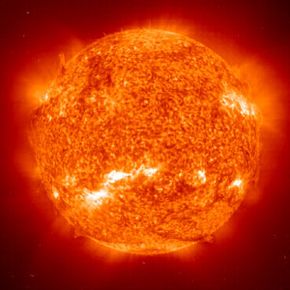 Chapter I: Dropping in on the neighbours: A stroll through our solar system
Chapter I: Dropping in on the neighbours: A stroll through our solar system
I: Sunshine on my face: our local star
Yeah, the most important part of our own solar system is of course that which gives it is name, Sol, or more commonly, the Sun, so that's where the
Darwin is bound on the first leg of our local journey. Make sure you have your shades on: it's damned bright out there! Insurance? Umm.. oh! Look!
While a sun is in fact any star, and every single other star is named (some of which I’ve noted above) ours really never had a name other than “the Sun”, though ancient astronomers did use their own name for the sun, that being Sol, and so sometimes, to distinguish it from other stars or suns, it is referred to as Sol. But really, it’s quite rare that this happens and so throughout this journal I will be calling it the Sun. And it’s
our sun, our celestial father who provides us warmth and light and, well, life. No wonder the ancients used to worship it, both as an actual object and as a god, or personification of one. After all, without the sun we’re all dead. Once that glowing orb in the sky that allows you to go bicycling or sitting in the park, or shines hard in upon you at your desk or as you trudge across desert sands, once it goes out, it’s all over people. The Sun nourishes all the planets, keeps them together by the force of its powerful gravitational pull, and regulates their temperature and therefore their weather.
For a very long time, it was firmly believed that the Sun went around the Earth, not the other way around. This was, mostly, because people could not conceive of Earth as being other than the centre of the universe (as was known at the time, which was the few stars visible to the naked eye, and probably not even recognised as such). God, or the gods, had created the Earth, so it stood to reason that it was the most important object in the sky. Well into the sixteenth century, the Christian Church preached that Earth was the centre of the universe (and flat) and if you disagreed, it was off to the Inquisition with you, for a one-time only, all-expenses-paid single ticket to hell and damnation. No, the Church did not take kindly to having its laws questioned, and even Galileo Galilei, known to history as Galileo, was persecuted and tortured by them for daring to suggest otherwise.
 (Well, Galileo did, at least, the Italian version. And he was not wrong... Say anything at all, or even look like you were going to say something that contradicted or even questioned Church dogma, and you could expect a summons. And I don't mean a subpoena either)
(Well, Galileo did, at least, the Italian version. And he was not wrong... Say anything at all, or even look like you were going to say something that contradicted or even questioned Church dogma, and you could expect a summons. And I don't mean a subpoena either)
But as science began to throw back the shadows of superstition and ignorance, and humanity emerged out of the darkness, new lines of thinking began and, more importantly, advances in technology and science meant that certain facts, held to be unalterable by the Church, such as Earth’s position in the cosmos, were proven completely baseless and untrue, and the reality was widely disseminated, along with actual proof. In 1992, more than three hundred years after he had been branded a heretic and condemned to house arrest after he recanted his “blasphemous” theory that the Earth revolved around the Sun, Galileo received a posthumous apology from the Church, when Pope John Paul II basically shrugged and said “sorry dude, we got it wrong. No hard feelings?” Well, I guess it was something, even if it was three centuries too late.
We now know the Sun to be the centre of our solar system, with eight (originally nine, until poor Pluto was demoted to the status of dwarf planet and removed from the solar system party invitations mailshot) planets orbiting it at different distances, one of which is of course ours. Contrary to popular belief for millennia, and to literary descriptions still used, the Sun neither rises nor sets, this effect being produced as the planet moves around the disc of the Sun, turning its face from the star (of course it’s never fully turned from the Sun, which is why when it’s day in the northern hemisphere, for example, it’s night in the southern). Our Sun is a G-type star, which kind of means it’s nothing special. It’s not a Red or Blue Giant, nor is it a White or Red Dwarf. It’s not a binary or trinary star and it’s not a pulsar, luckily for us. It’s the kind of star that might get mugged for its lunch money walking down the street by the likes of Arcturus or Rigel, or maybe that old bully Betelgeuse, and it would never get to take the pretty girl to the prom. It’s ordinary, in other words.
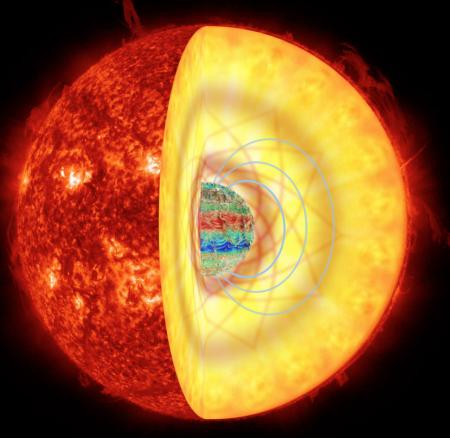
But it’s
our Sun, and while Red Giant might sound like a cool name for a star, trust me, you would not want to live on a planet orbiting one. In reality, you probably couldn’t, as we’ll see later. The Sun is basically a massive hydrogen bomb, with about three-quarters of its mass made up of that element, the rest mostly helium, and 600 million tonnes of hydrogen get converted by the process known as nuclear fusion into helium every second. The Sun is a sort of middle-aged star, four and a half billion years old, but it’s a grizzled old man compared to the sprightly Red Giant Betelgeuse, which has only been around for a piddling ten million, or the blue supergiant Rigel, a mere whippersnapper at seven million (estimated). The oldest stars known to exist go back thirteen to fourteen billion years since their formation. And you thought you felt old on your last birthday!
Eventually though, the Sun will use up all its hydrogen - nothing lasts forever - and transform into a Red Giant, in the process taking out our nearest neighbours, Mercury and Venus, and wiping all life from our own planet. But no need to book a spot on Branson’s Virgin Galactic just yet, you have time. This is estimated to occur in around five billion years, so lots of time put the kettle on and have a nice cuppa.
Under the hood: everything under the Sun
The Sun, like most stars, is constructed of several layers, at which we will now take a quick look. Don’t get too close: the surface of the Sun reaches temperatures of about 5,500 degrees Centigrade (nearly 10,000 Fahrenheit) - talk about sunburn! It’s actually so hot that no liquid or solid matter can survive there, and so the Sun is basically a giant ball of superheated gas. Want to land on its surface? Tough. Even if you could somehow construct a craft that would resist such matter-melting temperatures, there’s nothing there to land on. You might as well attempt to plant your flag of stupidity on the surface of Jupiter - which, again, has none. In fact, quite a few of our planets are gas giants, but again we’ll come to them in due course.
Core
This is, as you might expect, the very centre of the Sun, making up about a quarter of its surface, and is where those chemical reactions I spoke of earlier takes place. Hydrogen is fused to helium and produces energy. If you thought the surface of the Sun was hot (it is) then get this: in the core, temperatures regularly reach up to fifteen
million degrees (I’m not going to translate that to Fahrenheit because a) what’s a few million degrees between friends and b) my thermometers keep vapourising) and the pressure is immense (there are some science-y measurements but they don’t mean anything to me and probably won’t mean anything to you, so let’s just say if you feel pressure about your impending nuptials or that promotion you’re hoping for, or your upcoming gig, try doing it at the core of the Sun and see how you feel!) as hot, dense plasma is fused to produce the energy and heat the Sun gives off, and sent via several layer to the surface, first by radiation and then, once it’s got through the denser layers, by convection.
Radiative Zone
Sounds like something out of a Superman comic, doesn’t it? But no, this is actually the next layer of the Sun, where the energy released in the core is transformed by photonic radiation and sent on its journey towards the surface. Because the matter is so dense here, it can take over 170,000 years for gamma rays to get to the surface of the Sun, which is good news for us, as gamma rays are very dangerous and we don’t really want to see the Sun spewing them out during our lifetime.
Tachocline
This is a buffer zone between the Radiative and the Convection Zone
Convection Zone
See? The Convection Zone (not to be confused with the Convention Zone, a floating space platform for those who constantly go to meets and symposia) is where the energy from the core of the Sun is pushed to the surface by convection (by the circulation of currents within the star) rather than radiation (via electromagnetic photons) as the solar plasma from the core loses density and heat, and currents develop to carry the energy to the surface.
Photosphere
The part of the Sun we’re all most familiar with, the basic surface, the layer below which the Sun becomes opaque to visible light, and we see sunlight. This is the effect of photons escaping through this layer and the transparent atmosphere below it, becoming solar radiation, sunlight.
Atmosphere
We’re used to hearing this word, and it describes the ratio of gases that surround a planet, making it either breathable or not. As mentioned earlier, Titan, Saturn’s largest moon, has an atmosphere composed primarily of methane, which is poisonous to humans, whereas Earth’s atmosphere is mostly Oxygen and Nitrogen, which is not. But the Sun’s atmosphere refers more to the corona surrounding the star, which is made up of four separate elements.
The Chromosphere, transition region and corona are all hotter than the surface of the Sun. The transition region stands between the Chromosphere and the corona, the latter being the kind of halo we see around the Sun, and the thing we draw when kids as either wavy lines or spikes coming off the disc. It’s also the sort of shimmery halo you see when there’s a solar eclipse. It is in constant motion, moving at a rate of about 400 KM/second, called the solar wind. The final layer, the uppermost, is the heliosphere, and is filled with solar wind plasma.
Solar phenomena
We’ve all heard of the weird things stars - well, our Sun anyway - tend to do, but a quick checklist here.

We have solar flares, which are sudden flashes of brightness on the surface of the Sun, accompanied by ejection of coronal matter and which emit powerful radio waves, which, if the flare comes close to Earth, can penetrate the atmosphere and disrupt communications such as radio and television, and possibly internet too. They can also appear as bright auroras in the ionosphere.
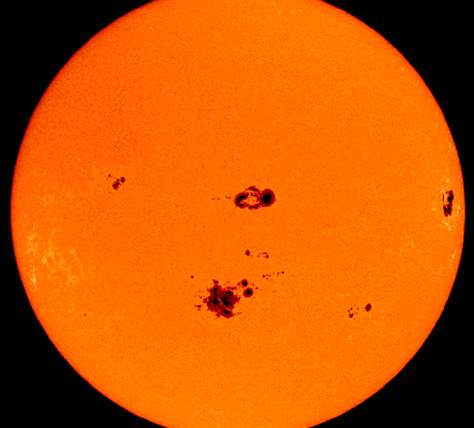
Then there are sunspots. These are not, as you might possibly think, our native star having a bad case of acne, nor indeed places where holidaymakers go to escape the rain, but are in fact areas on the surface of the Sun - ranging in size from a tiny 16 km across to a maximum 160,000 - where the temperature has dropped slightly. They are indications of intense magnetic activity, and often give rise to the aforementioned solar flares, as well as coronal mass ejections. They travel across the surface at speeds of about a few hundred metres per second, and in the case of larger ones, can be seen with the naked eye. If, that is, you decide like an idiot to look directly at the Sun, which is not recommended.

Coronal mass ejections? Oh yeah I mentioned them didn’t I? Well they’re basically plasma thrown off the surface of the Sun, accompanied by magnetic field, and often, as I said already, associated with or follow solar flares. They, too, occur around sunspot areas and they can also arise during solar prominences, of which more in a mo. They get released into the solar wind, and at maximum solar activity there can be anything up to three a day, whereas on the other end of the scale, at minimum solar activity, you might be lucky to see one every five days. If a CME hits Earth atmosphere it can kick up a geomagnetic storm, like the big one in 1989, which took out Quebec’s power grid for nine hours, plunging the city into darkness and leaving the area without electricity. CMEs can also carry SEP (Solar Energetic Particles) which are responsible for both the Northern and Southern Lights, at the North and South Pole respectively.
The last one I want to look at here (there are others, but hell, they’re mostly boring, and we don’t do boring) are solar prominences, which I rather foolishly believed until a few hours ago to be the same as solar flares. They’re not. Solar prominences remain anchored to the surface of the Sun, creating kind of loops that go from the photosphere to the corona, and while they can break apart and become CMEs, usually this tends not to happen. They can last for weeks or even months and are huge - the largest on record almost the diameter of the Sun itself, about 800,000 kilometres. A prominence viewed against the Sun instead of against space is called a solar filament.


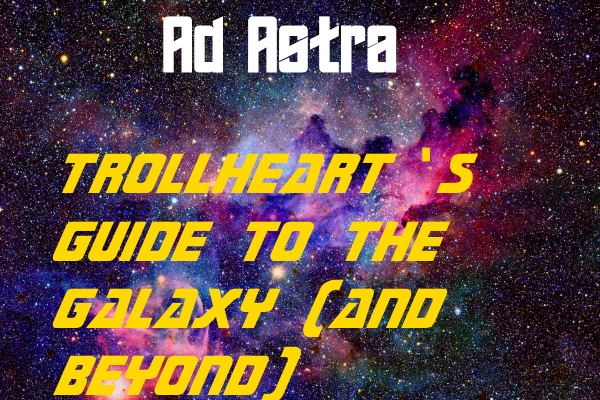












 Didn’t you see the logo above? As if.
Didn’t you see the logo above? As if. 









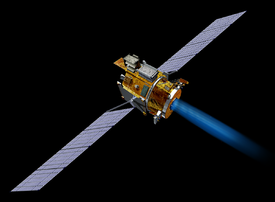

 Linear Mode
Linear Mode
